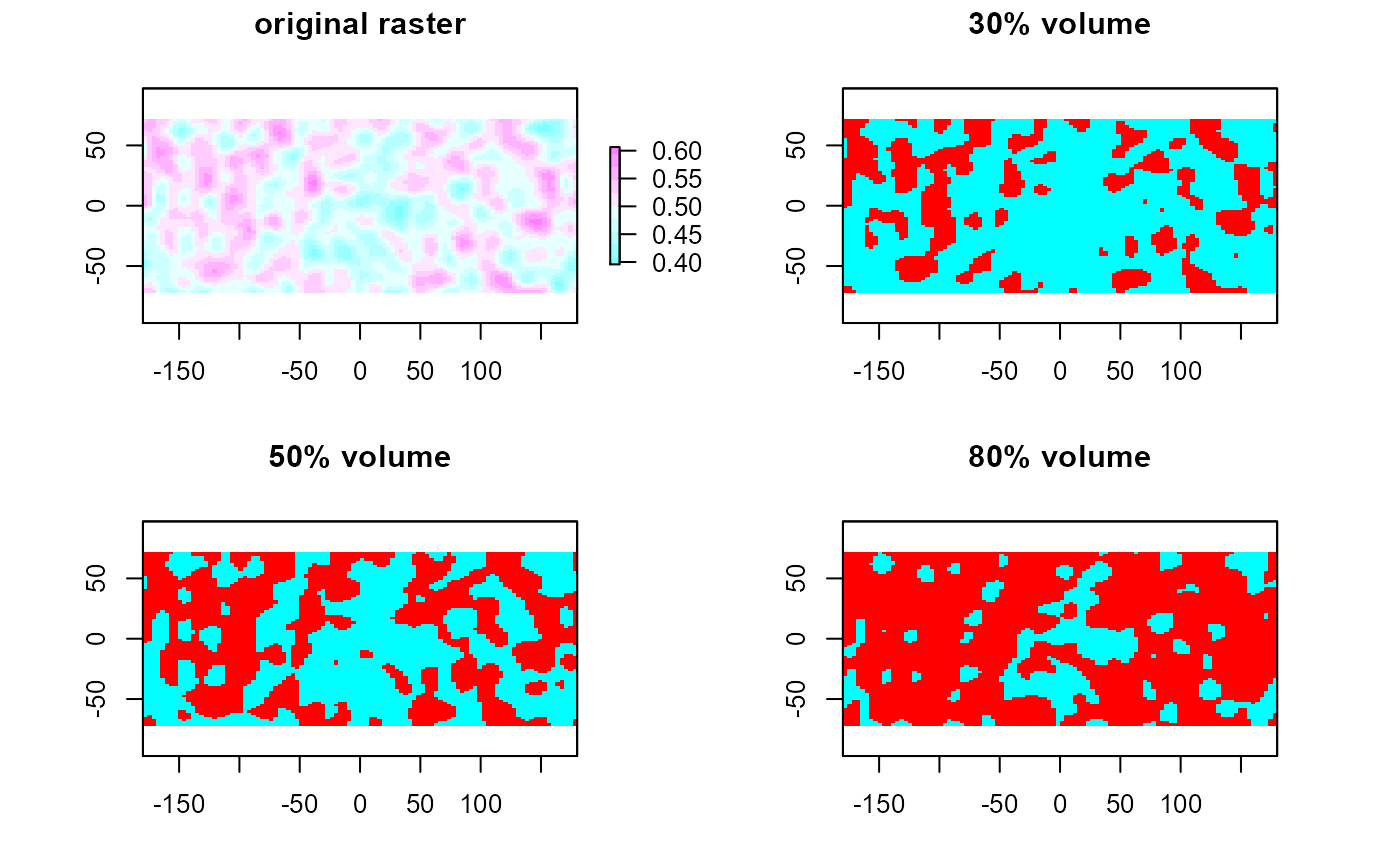Calculates a percent volume on a raster or based on a systematic sample
raster.vol(x, p = 0.95, sample = FALSE, spct = 0.05)
Arguments
| x | raster class object |
|---|---|
| p | percent raster-value volume |
| sample | base volume on systematic point sample (TRUE/FALSE) |
| spct | sample percent, if sample (TRUE) |
Value
if sample (FALSE) binary raster object with 1 representing designated percent volume else, if sample (TRUE) n sp SpatialPointsDataFrame object with points that represent the percent volume of the sub-sample
Note
Since this model needs to operate on all of the raster values, it is not memory safe
Author
Jeffrey S. Evans <jeffrey_evans@tnc.org>
Examples
# \donttest{ require(raster) r <- raster(ncols=100, nrows=100) r[] <- runif(ncell(r), 0, 1) r <- focal(r, w=focalWeight(r, 6, "Gauss")) r[sample(1000, 1:ncell(r))] <- NA # full raster percent volume p30 <- raster.vol(r, p=0.30) p50 <- raster.vol(r, p=0.50) p80 <- raster.vol(r, p=0.80) opar <- par(no.readonly=TRUE) par(mfrow=c(2,2)) plot(r, col=cm.colors(10), main="original raster") plot(p30, breaks=c(0,0.1,1), col=c("cyan","red"), legend=FALSE, main="30% volume") plot(p50, breaks=c(0,0.1,1), col=c("cyan","red"), legend=FALSE, main="50% volume") plot(p80, breaks=c(0,0.1,1), col=c("cyan","red"), legend=FALSE, main="80% volume")
